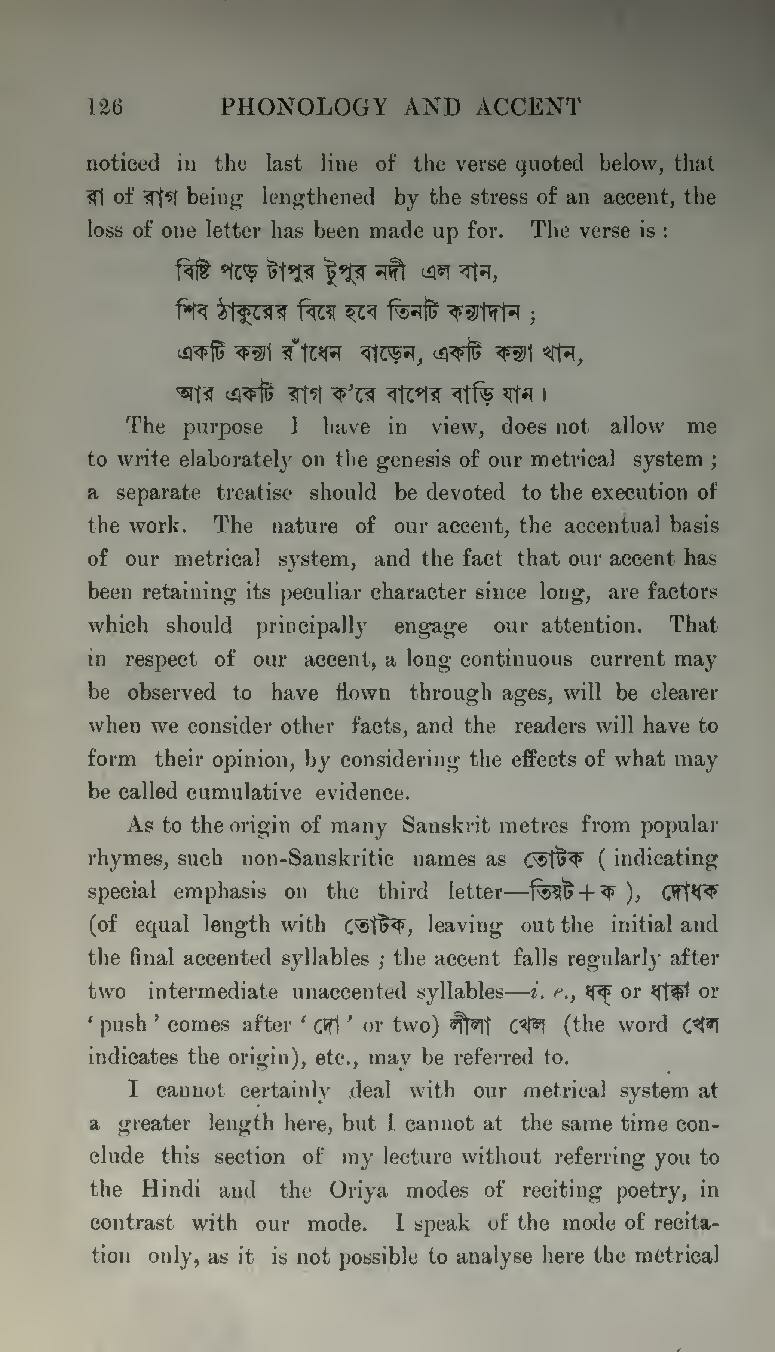noticed in the last line of the verse quoted below, that রা of রাগ being lengthened by the stress of an accent, the loss of one letter has been made up for. The verse is:
বিষ্টি পড়ে টাপুর টুপুর নদী এল বান,
শিব ঠাকুরের বিয়ে হবে তিনটি কন্যাদান;
একটি কন্যা রাঁধেন বাড়েন, একটি কন্যা খান,
আর একটি রাগ ক'রে বাপের বাড়ি যান।
The purpose I have in view, does not allow me to write elaborately on the genesis of our metrical system; a separate treatise should be devoted to the execution of the work. The nature of our accent, the accentual basis of our metrical system, and the fact that our accent has been retaining its peculiar character since long, are factors which should principally engage our attention. That in respect of our accent, a long continuous current may be observed to have flown through ages, will be clearer when we consider other facts, and the readers will have to form their opinion, by considering the effects of what may be called cumulative evidence.
As to the origin of many Sanskrit metres from popular rhymes, such non-Sanskritie names as তোটক (indicating special emphasis on the third letter—তিয়ট + ক), দোধক (of equal length with তোটক, leaving out the initial and the final accented syllables; the accent falls regularly after two intermediate unaccented syllables—i. e., ধক্ or ধাক্কা or 'push' comes after 'দো' or two) লীলা খেল (the word খেল indicates the origin), etc., may be referred to.
I cannot certainly deal with our metrical system at a greater length here, but I cannot at the same time conclude this section of my lecture without referring you to the Hindi and the Oriya modes of reciting poetry, in contrast with our mode. I speak of the mode of recitation only, as it is not possible to analyse here the metrical
